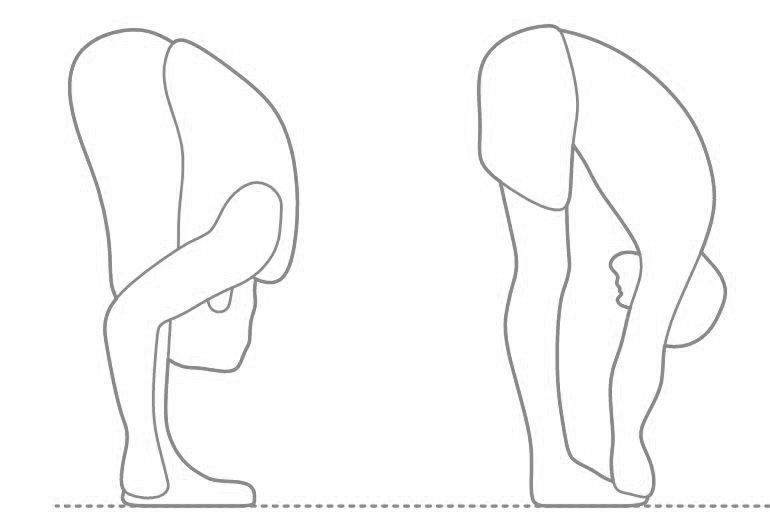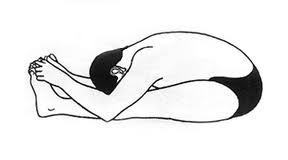
by Yoga In Nepal | Sep 25, 2022 | Health
21/90 days rules to have better life- How to Build better habit and Making Permanent habit?
Forming a routine takes a lot of time and effort. It requires hard work, commitment, and practise. If forming were simple, everyone would do it. Everyone wants to form positive routines, whether in work, leisure, or private life. That’s why it’s useful to stick to a set of guidelines when you’re trying to incorporate a new, positive habit into your life. The 21/90 rule is one method for making a new routine second nature.
What is the 21/90 rule?
According to the “21/90 rule,” a change in behaviour can become automatic after 21 days but requires 90 days to become second nature. Choose a professional or personal objective and commit to working toward it for 21 days.
By the end of the third week, you should have made it a habit to work toward your target. Once you’ve formed a habit, maintaining it for another 90 days is highly recommended. If you can stick with it for three weeks, then three months, it will likely become ingrained in your routine.
This principle can be applied to the development of any desirable habit. It could be as simple as getting in some exercise every day or as complex as learning to drive a car. The 21/90 rule is a fantastic way to improve your life if you can develop self-discipline and stick to it on a daily basis.
Living a Positive life
Most people have a tough time maintaining an upbeat outlook on life. But there is a way to help you do that if you want to: take stock of your entire life, select one bright spot, and write it down.
It’s hard to say what this minuscule item actually is. It could be your son’s or daughter’s outstanding performance in a school or extracurricular activity, a comeback by your favourite sports team, or a particularly successful project at work. Journal about the daily events that make you happy. The recommended time period is 21 days.
You can hold the same event multiple times if you like, but remember to keep the focus on the present moment. After you’ve accomplished this, keep at it for another 90 days.
The minimum requirement is one post per day, but you can publish multiple pieces in a single sitting. If you follow this method for a month, you’ll almost certainly find something upbeat to write about each day. When you shift your attention to the good things happening in your life, you will feel a sense of relief. You no longer give a damn about the unfavourable details, and even if you do, they can’t hold you back like they used to.
How to apply the 21/90 rule successfully?
- Set a goal
- Create a plan
- Build a habit
- Commit to it
Determine what you want to accomplish.
Make a choice about what it is you want to achieve or alter. It could be something you do regularly for work or for yourself. Take notes on it or write it down. Make sure it can be easily tracked and completed. Set the first day of the 21-day period (the first day of the 21/90 rule) as the date you intend to begin working on it.
Make a strategy
Make a workable strategy that will enable you to carry out your habit on a daily basis. Pick a time of day when you won’t be interrupted and can sit back and enjoy yourself. Also, it’s not a bad idea to have a backup schedule ready in case the first one doesn’t work out. Get a daily planner and start writing down your daily goals.
If you want to start exercising, for instance, you could commit to doing so for 15 minutes on the first three days, and then increase that to 30 minutes for the rest of the week. If you have a well-defined goal and strategy in mind, you can make the most of the 21st day of the 21/90 rule and get a jump on the rest of the project.
Develop a routine
Keep the focus narrow and the language simple. Keep your sights on forming just one good habit at a time, and the rest will fall into place naturally. Repeated daily practise will eventually make it so that you can’t wait for the next available opportunity to engage in this pursuit. Expectations will gradually rise. In addition, you’ll find that you’re getting used to it and that habit formation is simple. By the end of the 21st day, you will have formed a habit and completed the 21/90 rule’s first milestone.
Commit
If you want to turn this practise into a way of life, you must maintain your focus and determination. If you are consistent and committed, the 21/90 rule will work for you. Be steadfast in your efforts, and remember to keep things easy and straightforward. In the event of a last-minute change or unforeseen circumstance, you must always be prepared. If you’ve been working late and need to skip your workout, that’s fine. If you miss two in a row, it may be tough to get back into the swing of things.
Building a habit with the 21/90 rule:
Don’t overcomplicate things or put undue stress on yourself as you attempt to form a new routine. Make it something you look forward to and enjoy doing each day. To be successful with the 21/90 rule, you need to be committed, and you can only be committed if you are truly content. Developing some positive routines can help you become a better person, brighten your day, and alleviate stress.
The 21/90 rule can be applied to a variety of simple, beneficial habits that require only 5-10 minutes per day.
- Meditation and mindfulness
- Practicing gratitude and positive thinking
- Eating a fruit each day
- Exercising or light physical activity
- Journaling or recording your thoughts
Conclusion:
Each potential path to success is infinite. Make it something that will take your mind off of your busy life while also filling you with joy and relaxation. Happiness should not be one of the things you put off every day for the other 93 things that can wait that long. Find five minutes for yourself and really enjoy it; the rest of your life can wait.

by Yoga In Nepal | Sep 1, 2022 | Health, Meditation
What are the five states of mind?
The mind, ego, and consciousness are all discussed in Patanjali’s Yoga Sutras, among other facets of yoga. They explore aspects of the self that most of us tend to ignore. The term “yoga” refers to the practice of stilling the fluctuations of the states of mind as described in the Yoga Sutras.
That is to say, the states of mind devoid of the constant stream of distracting thoughts and mental clutter. Despite the seeming ease of the term “yoga,” actualizing its benefits is a challenging endeavor. Mindsets described in the yoga sutras:
- Kshipta – Chaotic or most fickle state of mind
- Mudha – Dull or Lazy state of mind
- Vikshipta – Partially focused mind
- Ekagra – One-pointed mind
- Niruddha – Fully absorbed mind
-
Kshipta – The Monkey Mind
A state of mind known as kshipta, or dispersed thinking, is the most common and least desirable way to go through the day. Because of the high proportion of waking time spent actively engaged in some form of thought or action, the “rajas” guna predominates in this condition.
A person in this mental state experiences rapid swings between positive and negative emotions, such as love and hate, liking and disliking, pain and pleasure, excitement and boredom. The states of mind is restless and easily distracted, always racing from one idea to the next. It’s possible that your eyesight will get blurry, causing you to feel uncomfortable, confused, and difficult to understand and get along peacefully with others in your relationships.
Symptoms of Ksipta State
- Having no ability to make decisions
- being restless
- Confusion and absolute lack of clarity
- Anxiety
How To Handle Monkey Mind
You can learn to handle your monkey states of mind by practicing yoga, which teaches you that you, the knower, are separate from your thoughts. By taking on the role of an objective observer, you can train yourself to focus only on positive, useful thinking patterns while letting go of the negative ones.
-
Mudha – The Donkey mind
Mental lethargy, drowsiness, and a lack of energy characterize the Mudha, or Dull, state of mind, which is governed by the ‘tamas’ guna. As a result of the mental lethargy, it is difficult to address the complexities of life.
During our waking hours, most of us move back and forth between Kshipta and Mudha. As a result of our rajasic nature, we are drawn to an object of sense. However, if the desired outcome is denied to us or additional work is required, the dull mind owing to lack of focus, finds excuses, and we are trapped in a state of dissatisfaction.
Symptoms of Mudha State
- Lack of energy and vitality
- Poor concentration
- Distorted connection with the inner self
- Depression /Sadness
How To Handle Donkey Mind
When you have to adjust to a dramatic change in your life, you may find that your sense of self begins to fade.
To calm the states of mind in this condition, one must let go of all thoughts and re-establish contact with one’s inner world, which can be accomplished through practices like yoga and meditation. This will allow one to discover their ultimate true self, which will serve them well in any circumstance.
-
Vikspita – The Butterfly mind
There are moments in life where sattva guna starts to dominate, and the states of mind can focus and concentrate. We feel balanced, happy, and clear in all spheres, and life appears to be a beautiful flow.
Symptoms of Vikspita State
- A calm mind, however, gets easily distracted
- Better concentration
- The mind is sometimes stable and other times confused.
- Ekagra – One-pointed mind
The mind is at rest; all thoughts and feelings have subsided, and it is now ready for concentration. When in an Ekagra state of mind, a person can focus their entire being on a single task for as long as they choose without being distracted by anything outside of themselves.
Symptoms of Ekagra Mind
- Better focus
- More awareness and clarity
- Thinned ego
- Awakening of intuition
Mind In Ekagra State
When the states of mind reach this point, it is said to be in yoga, or it can be seen as the beginning of one’s yogic journey. You’ve found a singular focus in life that will allow you to sort through information, let go of your ego, develop your intuition, and gain access to extrasensory perception. In this Ekagra state of mind, you can focus on detailed parts of everything that you tried to have concentration.
- Niruddha – fully-focused mind
After experiencing Ekgrah (single-mindedness), one can maintain concentration on a single task at hand. In this case, one’s focus is singularly fixed and undivided.
By this point, the states of mind has been cleared of all impressions, both old and new, and is completely at rest. One can move through life with effortless elegance. The ever-evolving circumstances of life elicit no response.
Symptoms
- Single-pointed focus
- Stable mind
- Grace in the overall aura
- The complete stillness of thoughts
Mind in Niruddha State
Even though attaining a Niruddha state of mind (Yoga Chitta Vritti Nirodha) is the pinnacle of yoga, you must maintain your yoga practice and conduct in-depth self-examination on a regular basis to get there. Look for fresh methods to keep your awareness fresh and expanding.
Conclusion
Most of us spend most of our waking hours in one of the first three mental states of mind. Our connections to the outside world are maintained by these three mental states.
Keeping focus and equilibrium is difficult for a Kishipta’s restless mind. The Mudha states of mind is too exhausted to concentrate.
Inconsistency and a lack of concentration are hallmarks of the Vikshipta mind. The yogi can internalize their awareness through the last two states of mind (Ekagra and Niruddha). Therefore, it facilitates increased levels of concentration.
The above categorization of mental states aids in self-awareness, which in turn promotes spiritual and material development.

by Yoga In Nepal | Sep 15, 2021 | Health
Yoga Posture For Fatigue which Restores Energy In Body And Makes Relax
As a human, our body and mind can feel fatigued for many reasons and at any time. Using yoga postures to bottle up and restore energy is the best natural way to do that. From physical to mental problems, yoga has always played an effective role to cut that out. This modern lifestyle is eating out mind and body slowly. Exertion, emotional stress, anxiety, and insomnia are the characteristics of a fast-paced lifestyle that take over the physical and emotional health of a person. Frequent body movement will help us to get back to normal and yoga is a masterful way to do so.
Yoga posture for fatigue are as follows:
1. Child pose

A child pose also known as resting pose is a kneeling asana in modern yoga as exercise. This yoga posture for fatigue helps to lengthen and stretches the spine.
To do this yoga, you need to come to your hands and knees and speeding your knees as wide as your mat keeping the tops of your feet on the floor with the big toes touching. After that, bring your belly to rest down between your thighs and root your forehead to the floor relaxing your shoulders jaw, and eyes. Stay as long as you like, eventually reconnecting with the steady inhales and exhales of your breath.
child yoga posture for fatigue also helps to alleviate stress and anxiety.
The other benefit of child pose is that it flexes the body’s internal organs and keeps them supple. It lengthens and stretches the spine.
2. Big toe pose

This pose is also known as Padangusthasana.
The basic steps to perform this yoga are: stand upright with your inner feet parallel. Contracting your front thigh muscles lift it to kneecaps keeping your legs completely straight. Slide the index and middle fingers of each hand between the big toes and the second toes. Exhale and inhale your breath. Hold your position for as long as you can and release your body slowly.
The major benefits of this yoga are it calms the brain and helps relieve stress, anxiety, and mild. It also helps to strengthen the thighs relieving headaches.
3. Fish pose

It is the next pose to boost the body’s energy and fight fatigue. This pose is also known as Matsyasana.
The steps to perform this yoga is :
Lie down on your back bending your knees and then lifting your hips. Inhale and press into your elbows and shoulders, lifting the chest. Bring your back or head to the top of the floor and hold this position for a certain time. Release your body slowly.
Fish pose energies your body stretching the front of your body which improves spinal flexibility and posture.
4. Cobra yoga posture for fatigue

The Cobra pose is also known as Bhujanghasana.
First, of all, begin on your belly with your feet hip-distance apart and your hands placed beside your ribs extending your big toes straight back. Spin your inner thighs to the ceiling while firming your outer ankles into your midline. Take your gaze up only to the degree that the curve of your neck is a continuation of the curve that has already been established in your upper back. Hold this position for a certain time and release your body slowly.
This pose helps to boost energy and fight fatigue by improving your posture and counteracts. It also helps to relieve lower back pain and strengthen the abdominal area.
5. Seated forward bend pose

This yoga posture for fatigue is also known as Paschimottanasana. You should consult a doctor before beginning an exercise regime.
Bring your arms straight out to the sides and up over your head, reaching toward the ceiling. Inhale and draw your spine. After then forward your neck hinging at your hips. Keep the neck as the natural extension of your spine, neither cranking it to look up nor letting it go completely. Hold your position as long as you can.
This yoga posture for fatigue will help you calms the brain and helps relieve stress and mild depression.

by Yoga In Nepal | Aug 16, 2021 | Health
PREVENT KNEE INJURIES DURING YOGA
Knee is an important joint of our body. Not only for locomotion, knee joints play vital role when it comes to weight bearing. It won’t be uncommon to say that knee joint also tops the chart when we are talking about injuries in yoga. Here in this article we will be illuminating on the anatomy of knee, why they are prone to injuries and what preparations and modifications can help to prevent knee injuries during yoga practice.
Anatomy of the knee
Knee is a synovial joint made by the union of three bony structures – femur, tibia and patella. Femur is the long bone of the thigh. Tibia is the larger bone of the leg which you can notice superficially as the shin of your leg. Patella is simply the knee cap – the rounded structure which you can observe on the knee when you sit with legs fully extended.
The femur and tibia are joined by different ligaments including Anterior Cruciate Ligament (ACL), Posterior Cruciate Ligament (PCL) and Medial Collateral Ligament. Femur and patella are joined by quadriceps tendon while patella and tibia are joined by patellar ligament. (Lateral Collateral Ligament joins femur with fibula – the shorter leg bone.)
The lower surface of femur and upper surface of tibia are provided with an extra layer of cushion called meniscus. The ACL an PCL are present between these menisci.
Vulnerability of knee joint
From the perspective of anatomy, knee joint can be considered as a vulnerable joint and hence we need to prevent knee injuries during yoga practice. The vulnerability comes due to its presence between two long and strong bones, femur and tibia. These two long bones can act as long levers which would mean more force can be generated with less effort and can be directed to knee from either parts. This very fact is actually helping us for locomotion but at the same time putting the knee at risk too.
Vulnerability increases when knees are involved in rotatory actions. You can notice easily that the knee is a kind of hinge joint i.e. joint permitted mainly for flexion and extension. Sideward movement of leg with respect to thigh and internal or external rotation at the level of knee is not observed in extended knee position. But when the knee is folded, both of these movements can be elicited.
Knee is not designed for such movements and hence asana practice that tends to rotate the knees are the ones that push knees towards injuries.
Taking care of the knees while practicing asana help to prevent knee injuries
Most yoga practitioners complain of knee injuries while practicing the lotus pose/ padmasan group of asanas. For any normal observer trying to imitate the lotus pose, he/she will bring the foot directly over the opposite thigh. You can notice such attempt in actual is causing sideward movement of leg with respect to thigh which puts knee at risk.
Often for westerners who are not used to sit in cross-legged position find lotus pose difficult to perform. The main key for attaining the final lotus pose is hidden in the thigh muscles, specifically the lateral rotators.
Flexible lateral rotators aid in performance of lotus pose by putting knees at lower risk. When you sit in a cross-legged position and find your knees being lifted high from the ground, sometimes even crossing the hip level, then you should know that your lateral rotators muscles are not opened enough.
If you have restricted lateral rotators and you try to perform lotus pose, there is a high chance you are going to invite knee pain. thus prevent knee injuries while doing this, you should work out for opening of lateral rotators. Butterfly pose and remaining in Baddha Konasana with the support of wall behind can be effective measures to open up the lateral rotators.
As a part of adaptation for moderately lifted knees, you can put blocks below the lifted knees while doing lotus. If the knees are lifted above the hip level, perform cross-legged position by sitting on a block so that the gap between the knees and the ground is decreased.
Other asana like in Mandukasana (Frog Pose), the foot and leg are oriented at 90 degrees, this brings the rotatory movement at the level of knee. If your groin is tight and you are not being able to lower down your torso in the frog pose, it’s better to angle the foot inwards rather than sideward, for the sake of knee safety or to prevent knee injuries.
Similarly, in Trianga Mukha Ekpada Paschimottanasana, the toe, ankle and knee should be in the same line. Moving the foot sideward in the folded leg would cause rotatory movement at knee and hence could lead to knee injuries.
Janushirsana is another asana where knee of the folded leg can undergo rotation if the lateral rotators are not opened enough. The rotation at knee can be reduced to some degree by bringing the foot of folded leg to the groin region instead of pressing against the opposite thigh which help to prevent knee injuries.
Conclusion
From these facts we can notice that the issues with knees originate from somewhere else, especially the hips. So basically HIP OPENERS exercises are highly recommended for safety of knee and to prevent knee injuries. Being aware of sensation around the knees helps us to recognize our own faulty practice. One should stop in such instances and should review how poses were being performed and apply modification that can make it feasible and safe. In case you have problem in Knee, you need to follow the specific yoga therapy for knee pain.

by Yoga In Nepal | Dec 29, 2020 | Health
15 Stress Management Techniques
Before reading this part 2 of stress management techniques, please read the 1st part which also suggests the 15 effective techniques of stress management part -1. We are breaking the stress management process in two-part ( part 1 and part 2). Altogether, here are 30 techniques to manage the stress which is enough for you to remove your stress.
You can either run from it, or you can stand up to it. Stress is a common phenomenon in our daily lives and it is crucial to keep it in check. You might be familiar with people bursting out or acting in rage. That person can be you if you don’t have proper control over your stress. So, let’s take a look at some stress management techniques that you can use to prevent such incidents from occurring.

1. Learn to express gratitude
The daily grind has stopped us from being grateful for what we have. We don’t appreciate the house we live in, the job we have, and the love of our partners. We spend so much worrying about what will happen that we don’t prioritize the things we have. As a result, we welcome stress in our lives. For at least 5 minutes a day, appreciate the things that you have. Take time to appreciate your current situation and how hard you worked to be here.
Although momentary, it will help to alleviate your stress.
2. Find alternatives for coffee
Are you a coffee person or are you a tea person? If you are a coffee person, then you better start finding its alternatives. Coffee is the kick that we need to start our day. While many studies suggest that coffees improve productivity, it also increases stress levels. Nothing can be worse than stressing an already stressed individual. To put in perspective, new stress management techniques see you try coffee alternatives like green tea.
Give it a try. Who knows, it might be your favorite drink!
3. Develop a pastime activity
It is rare to find free time in this hectic world. There is always one thing or another to finish. However, you must find yourself a simple pastime activity. It will not only help you to relax, but it will also give you time to reflect upon yourself. For starters, you can watch a new TV show or learn a new skill. It does not hurt to add a new skill to your repertoire!
4. Try to be positive
With all the negativity going around the world, it is quite hard to be positive. However, in these stress management techniques, we aim to be very positive. Try to find the positive vibes going around you and develop a new outlook towards stress. Once you start to find the positives in every situation, it’ll start a process that’ll make you happy and healthy. Give it a try and even if you don’t succeed, there are other alternatives.
5. Aromatherapy
A relatively new method of managing stress that uses smell is called aromatherapy. In this technique, we use strong yet soothing fragrances. To emphasize, we apply the fragrance on the wrist or under the nose and with the aroma, release our stress. Besides relieving stress, aromatherapy has proven to reduce the negative effects of anxiety and depression too.
6. Massage session
When we get stressed, the muscles in our body become tense and tight. As a result, we feel soreness and increases our stress again. This vicious cycle needs to broken if you want to reduce stress. Massage is a stress management techniques in which we loosen up the tight muscles and release the stress built in the body and mind. So, the next time you feel a bit sore, head to your nearest massage center.
7. Take part in an autogenic training
Autogenic training is a relatively new idea for managing stress. Through this technique, we learn to regulate the body functions that are normally under the control of our subconscious. For example, heart rate, breathing, and blood pressure. Gaining control over these factors helps us to regulate stress levels. Also, it helps treat disorders like insomnia, blood pressure, and anxiety.
8. Imagery techniques
Another technique in the list of stress management techniques is imagery or guided imagery. This method allows you to visualize your goals and accentuate your performance. It is a powerful healing and behavior affecting technique too. Guided imagery technique helps solve problems like pain management, high blood pressure, enhanced immunity, and even depression.
9. Breathing exercises
There are a variety of breathing exercises that you can try to put your stress under control. For example, you can try breathing exercises like alum-vilum. Or, you can follow the principles that are stated in the Pranayama breathing techniques. Initially, you should decide on a method of training and then you should keep practicing it to see maximum benefit.
10. Head to the gym
You must release the stress built up in your body. A great way to release it is by going to a gym. Working out falls on our list of stress management techniques. Taking part in weightlifting activities will decrease your stress and simultaneously make you fit and strong in the process. Also, you will meet like-minded individuals like yourself and end up making valuable friends too.
11. Develop your standard
In some cases, stress arises when you are too focused on doing things the right way. You must understand that not all things are perfect. Once you accept the fact that nothing can be ‘perfect’ you can feel your stress levels dwindling. This method is a habit rather than a quick relief. However, upon integrating this habit, you can feel your life becoming easier.
12. Stay away from unhealthy habits
Unhealthy habits are a leading cause of stress. If you have habits like eating lots of junk food, smoking, and heavy drinking, stress will be your companion. Make sure that you remove such bad habits before practicing other stress management techniques. It is one of the easiest and fundamental methods out there.
13. Interact with your friends
Whenever you feel stressed, interact with your friend circle. Sharing stress helps to reduce it and you’ll also gain new techniques and methods to tackle the problem. The more you share about your problem with your close ones, the more it will be helpful. In the majority of cases, having a person to listen to is helpful.
14. Enjoy life & practice saying ‘no’
Life is short and taking stress does not do justice it. Find time for yourself to explore the beauty of nature. Also, find time to not take things for granted. Understand that things are the way they are for a reason. Navigate through each up and downs of life and enjoy it to the fullest!
You should have a clear understanding of your limits. It is equally important that you stick with them too. This statement holds great importance in your personal as well as professional life. Saying yes to every request and favors from people will invite unwarranted stress in your life. This great stress management technique will help you to lead a life where you are not bothered by unwanted people.
However, don’t say no all the time as it might hamper your social life!
15. Yoga & Meditation
Another physical exercise that sees you push your physical limits is yoga. Unlike the banging of weights and loud music, yoga sees you indulge in inner peace. It helps you realize your true self and keep harmful thoughts and energy at bay. Unlike a gym, where there include huge monetary items, yoga does not include much. All you need is a yoga mat and a quiet place. Start it right now to witness the bliss it provides.
The human mind tends to wander a lot. It is of utmost importance to keep it from going back and fro. One way to solve this problem and reduce stress simultaneously is meditation. It’s one of the useful stress management techniques that sharpen the brain and lets you achieve the desired result. Be sure to practice it daily to reap maximum benefit.

by Yoga In Nepal | Dec 24, 2020 | Health
15 Stress management techniques-part-1
What happens when you run continuously without taking any rest? The answer is quite simple, we’ll reach physical failure. Likewise, the human brain too if does not take a breather from stress, then mental fatigue will come. You might be under the notion that it is manageable but the reality is far more painful. In this blog, we shall discuss the key stress management techniques that you can incorporate in your life.
What Is Stress Management?
Stress management refers to a set of activities, physical or mental, that aims to reduce the stress levels in the body by identifying stress factors and reducing them. It is virtually impossible to eradicate stress but its impacts can be reduced. With this intention, stress management techniques have come into existence.
Stress Management Techniques
1.Meditation
We know that meditation helps us to find inner peace and gain a new perspective in life. What many don’t know is that it acts as a solid stress management technique. Find yourself at least 30 minutes a day where you can meditate. As you get the hang of it, you’ll realize its benefits and feel your productivity levels soaring too.
2. Explore the world
Most of the stress comes from internal factors like work, study, and household activities. Make time for yourself by doing some outdoor activities. For instance, you can go on a hike or just visit the nearby lake or pond. Spending some time in nature relaxes your mind and body. It may not remove the stress but it will give you the strength to overcome it.
3. Are you getting enough sleep?
There are days when we wake up on the wrong side of the bed. Not only do we feel lethargic, but the daily stress multiplies by tenfold during such times. This case is more prevalent when you don’t get enough sleep. Sleeping relaxes the mind and body and provides strength to tackle the problem. It is an overlooked stress management technique.
4. Take the help of a professional
If you feel that stress is eating you from the inside, then the best solution is to visit a professional. Seeking mental health care is often frowned upon but don’t let the stereotypes get to you. Mental health is as important as physical health and it should be your priority to maintain it.
5. Take up a hobby
When was the last time you spend some time on a hobby? If you don’t remember, then we advise you to take up a hobby immediately. Hobbies are great stress management devices that not only remove stress but promote creativity too. The type of hobby that you can take on is limitless. Who knows, you might even build a career out of it.
6. Take a break after performing activities
The human brain can focus for approximately 30 minutes. More than that and the mind starts to wander. Although we can train ourselves to focus for longer durations, eventually, we’ll hit a brick wall. To prevent that from happening, we advise you to take at least 10 minutes break after working. It will help you to perform better and reduce unwarranted stress.
7. Stand up to the stress factors
If certain things that are causing you to stress are approachable, then why not approach it? As an illustration, if your boss is making you work odd hours and that’s causing stress, then approach your boss. It makes total sense to approach the stress-causing factors and negate them. This is an overlooked stress management technique that has huge benefits.
8. Arrange your things
When we are in stress, even simple things tend to multiply our stress. As an example, the sink full of dishes, the messy bed, and the messy study table will magnify your stress. So, it is important to arrange your stuff once you finish the task. It will give you a sense of accomplishment and make your day better.
9. Unplug from electronic devices
Throughout the day, we are bombarded with tweets, messages, and notifications. I understand that they are crucial in sustaining a living but it is equally important to stay away from them. Separate an hour daily where you’ll spend some time alone without being bothered by electronics. Once you do it, you’ll realize that it is an excellent stress management technique.
10. Create a mental picture of your goals
In some cases, stress occurs due to being unable to achieve one’s goals. If you feel that your stress stems from that, then you need to first visualize your goals. Secondly, you need to take appropriate steps in making your goals a reality. Stress occurs when our expectations do not match with reality. So, while formulating a goal, make sure that it is specific, measurable, achievable, and time-specific.
11. Indulge in exercise
Exercise is the most preferred way of stress management. Taking part in any physical activity helps you to release the stress that has been built up within you. You can practice any sort of exercise like hitting the gym or playing any sport. It is better that you exercise at least 3-4 times a week. Exercising will not only keep your stress levels in check, but it will also lead to your greater physical being too.
12. Prepare a journal
If you don’t have the habit of penning your activities in the paper, then now is a great time to start. When you express your feelings, then you can decrease your stress levels. Writing in a paper does just that. Also, having a journal provides you ample time to reflect on yourself.
13. Talk with a friend
When we keep things to ourselves, we are placing a huge load on ourselves. The more you talk about your problems with a loved one or friend, you can feel the stress dropping. Sometimes, having a hearing ear is the solution you need. This stress management technique works wonders on many levels. The next time you find yourself in a stressful situation, be sure to talk with your friend first!
14. Embrace some aspects of stress
Rather than picturing stress as some sort of demon, you can think of it as a constant companion in life. However, distinguishing it as a small ant or a huge elephant depends on you. If you picture it as an ant, then there won’t be many problems. But as an elephant, it creates a whole set of problems. In this technique, we acknowledge that stress will always be there in our lives and we do the necessary steps to reduce it and live with it.
15. Reading
The final step in the stress management technique is reading. No, we don’t mean that you have to read bulky books. Read some novels depending on your choice. When you develop a habit of reading, you’ll be much mature and resilient. Also, you won’t have time to stress as you’ll be engrossed in books.
Read more 15 methods of stress management techniques part 2 here










